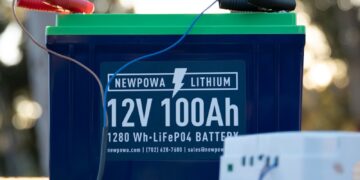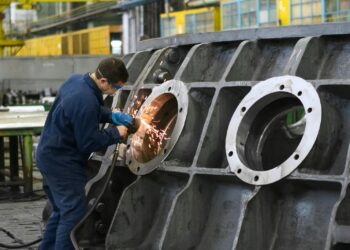The digital age is powered by two unstoppable forces: Bitcoin mining and data centers, both guzzling electricity like there’s no tomorrow. Bitcoin miners, racing to crack cryptographic puzzles for crypto rewards, burn through over 120 terawatt-hours a year—enough to rival entire nations. Data centers, the backbone of cloud computing and AI, are on track to double their energy appetite by 2030. Meanwhile, the renewable energy revolution—solar panels blazing, wind turbines whirling, batteries humming—is reshaping how we power the world. If you’re sitting on vacant land, you’ve got a front-row ticket to this gold rush. By selling or leasing your land for alternative energy projects and then leasing or selling it back to Bitcoin miners and data centers, you can turn dirt into dollars, not once but twice. This isn’t a pipe dream—it’s a calculated hustle that demands smarts and stamina. In this 2500-word roadmap, we’ll guide you through transforming your empty acres into a cash-flow machine, spotlighting industry heavyweights like Marathon Digital Holdings, Riot Platforms, Equinix, Digital Realty, and Pacifico Energy to show you the art of the possible.
The Opportunity: Why Your Land Is the Hottest Asset in Town
Bitcoin mining isn’t for the faint of heart. Picture thousands of ASIC computers screaming through calculations, each one a tiny furnace churning out Bitcoin while sucking down enough power to light a neighborhood. Data centers are just as ravenous, with servers crunching data for everything from TikTok videos to machine learning models, all needing constant cooling and electricity. For both, energy costs are the make-or-break factor, driving miners and operators to seek out the cheapest, most reliable power sources.
That’s where renewable energy comes in, and it’s a game-changer. Solar farms, wind parks, and battery storage systems are sprouting up as the world races toward net-zero carbon goals. These projects crave land—big, open swaths in sunny or windy places, often far from city grids. Your vacant land could be the perfect stage. Sell or lease it to a renewable energy developer like Pacifico Energy, a leader in solar and wind projects across the U.S., Japan, and Europe, and you’re banking on the green boom. But the real genius lies in what comes next: once the panels are up or the turbines are spinning, your land becomes a magnet for Bitcoin miners like Marathon Digital Holdings and data center giants like Equinix, who’ll pay a fortune for that clean, cheap power. It’s a double-dip strategy—profit from renewables, then profit again from the tech titans desperate to plug in.
Step 1: Sizing Up Your Land’s Superpowers
Your land’s not just a patch of earth—it’s a potential powerhouse, but only if it’s got the right stuff. Imagine a 200-acre spread in West Texas, where the sun hammers down 300 days a year and winds howl across the plains. That’s a renewable energy dream, but even less flashy plots can shine. The key is matching your land to what developers, miners, and data centers need.
Start with location. Solar loves blistering sunlight—think Texas, Arizona, or New Mexico, where rays are relentless. Wind demands steady gusts, favoring the Midwest or Great Plains. Pacifico Energy, with its portfolio of over 1.5 gigawatts in solar and wind, zeroes in on sites with high irradiance or wind speeds but also checks for infrastructure. If your land’s near a power line or substation, it’s a big win—renewables need to feed the grid or power on-site clients like Riot Platforms, whose Texas mining hub drinks megawatts like water.
Size and shape are crucial. Solar farms need 5-10 acres per megawatt, so 200 acres could host a 20-40 megawatt array, enough to juice a mid-sized mining operation. Wind turbines take more room—30-50 acres each—to avoid air turbulence, but a couple can power a data center’s edge facility. Miners and data centers like Digital Realty need 10-200 acres, depending on scale, with space for cooling towers or backup generators. Flat land is gold for solar panels and buildings, while ridges suit turbines. If your plot’s a jagged mess, leveling costs could bite, so get a surveyor to scope it out.
Zoning and permits are your next hurdle. Rural areas, especially in crypto-friendly states like Texas or Wyoming, often roll out the red carpet for renewables and miners like Marathon Digital Holdings. But some counties block industrial projects, so visit your local planning office to confirm what flies. Renewable permits—covering environmental impact, wildlife, and noise—can take 6-18 months and cost $10,000-$50,000. Data centers face tighter rules, especially for water use, making miners easier tenants. Knowing your land’s legal runway upfront keeps you ahead of the game.
Finally, sniff out demand. Are miners or data centers nearby? Texas is a hotbed, with Riot and Marathon gobbling power, while Equinix builds cloud hubs in California and Virginia. Is your region’s electricity cheap or green? Deregulated grids, like Texas’s, keep rates low, and federal incentives, like 26% tax credits for solar, lure developers like Pacifico Energy. If your 200 acres sits in a sunny, windy, miner-happy zone, you’re holding a winning lottery ticket.
Step 2: Banking on Renewables—Sell or Lease to Developers
With your land’s potential mapped, it’s time to cash in on the renewable energy boom. Picture your Texas spread, ripe for a solar farm that could power thousands of mining rigs. Developers like Pacifico Energy are scouring the U.S. for sites to build their next solar array or wind park, and your 200 acres could be their jackpot.
Begin by targeting buyers or lessees. Pacifico Energy, with a pipeline of 7 gigawatts across solar, wind, and battery storage, is a prime contender. Their projects power everything from urban grids to off-site clients like Riot Platforms, and they’re always hunting for land with strong sunlight or wind. Other giants, like NextEra Energy or Invenergy, play in the same space, but Pacifico’s knack for custom energy solutions—think solar paired with batteries for miners—makes them a standout. Reach out via their website, network at renewable energy expos, or hire a broker who knows the green game.
Now, choose your move: sell or lease? Selling is a quick hit. Land primed for renewables fetches $10,000-$50,000 per acre, so 200 acres could bring $2-$10 million, depending on grid access and resource quality. If your plot’s near a substation and screaming for solar, Pacifico might shell out $6 million to fast-track a 40-megawatt farm, locking in your payday. Selling’s great if you want to cash out and pivot, but it cuts you off from future gains.
Leasing is the long game, delivering steady income for decades. Renewable leases typically run 20-30 years, paying $500-$2,000 per acre annually. At $1,200 per acre, your 200 acres generate $240,000 a year—$4.8-$7.2 million over the term, with rent hikes tied to inflation sweetening the pot. Pacifico Energy leans toward leases to keep their costs flexible, letting you pocket cash while retaining ownership. When the lease ends, your land’s a powered-up asset, ready for the next act.
Negotiation seals the deal. Push for a slice of energy sales—1-2% of the power sold to Equinix could add thousands yearly. If Pacifico plans a solar-battery combo, emphasize your land’s proximity to mining hubs like Marathon’s Texas sites to justify a premium. Spend $5,000-$20,000 on pre-development—solar irradiance tests, wind studies, or initial permits—and you could boost your price or close faster. A pre-vetted site is catnip to Pacifico, shaving months off their timeline.
Imagine leasing your 200 acres to Pacifico Energy at $1,200 per acre, banking $240,000 annually. They build a 40-megawatt solar farm with battery storage, designed to power high-demand clients like miners or data centers. Your land’s now a renewable hub, churning out passive income and poised for the big payoff.
Step 3: Going All-In—Building Your Own Renewable Empire
If you’ve got capital and courage, skip the developer and build the renewable project yourself. This is a high-stakes bet—$20-$30 million for a serious solar farm—but the rewards could make you a player in the energy game. You’re not just leasing land; you’re crafting a power plant that Marathon Digital Holdings and Digital Realty will fight to tap.
Pick your poison. Solar’s the easiest entry, with panels at $0.50-$1 per watt. A 40-megawatt solar farm costs $20-$25 million, covering panels, inverters, and wiring. Wind’s steeper—$1-$2 million per 2-megawatt turbine—but two turbines can feed a small mining setup. Battery storage, a Pacifico Energy specialty, runs $300,000-$500,000 per megawatt but ensures miners like Riot get power day or night. Pacifico’s hybrid model—solar, wind, batteries, and even cogeneration (using waste heat for extra juice)—is your north star, delivering the reliability tech tenants crave.
Financing is the beast. You’ll front 20-30%—$4-$7.5 million for a $25 million project. Bank loans cover 50-60%, especially if your land’s collateral. Federal tax credits (26% for solar) and grants from the U.S. Department of Energy can knock off millions. Partnering with Pacifico Energy could lighten the load—they might co-fund, leveraging their 1.5 gigawatts of project experience for a share of profits. Their expertise in microgrids and storage makes them a dream teammate.
Permits and construction take grit. Expect 6-18 months for permits ($50,000-$200,000), tackling environmental reviews and grid studies. Solar buildout runs 6-12 months; wind takes 12-24. Hire engineers to design the system, or tap Pacifico for turnkey services, streamlining permits and construction for a fee. Total timeline: 2-4 years.
The payout’s worth it. A 40-megawatt solar farm generates $10.4-$20.8 million annually selling power at $30-$60 per megawatt-hour (20% capacity factor). Sell directly to Equinix at $50-$100 per megawatt-hour, and you’re banking $17.2-$34.4 million, minus $4-$6 million in costs. Pacifico’s batteries and cogeneration boost efficiency, letting you charge more. Your 200 acres are now a profit engine, ready to host the hungriest tenants.
Step 4: The Big Score—Leasing or Selling to Miners and Data Centers
Here’s where your vision pays off. With renewable energy flowing, your land’s a beacon for Bitcoin miners and data centers. Marathon Digital Holdings, with 35 exahash per second, needs megawatts to grow. Riot Platforms’s 700-megawatt Texas hub is a power-hogging monster. Equinix and Digital Realty, running 250+ and 300+ data centers, hunt green energy for cloud and AI. Your renewable-powered land is their holy grail.
Leasing keeps the cash flowing. Powered land commands $2,000-$10,000 per acre annually—200 acres at $7,000 per acre yields $1.4 million a year. Miners like Marathon favor short leases (1-5 years) for agility; data centers like Digital Realty lock in 10-20 years for certainty. Pacifico Energy’s co-location trick—miners or servers beside solar panels—packs more tenants onto your land, juicing revenue. Offer power at $40 per megawatt-hour (vs. $60 grid rates), and Riot’s signing tomorrow.
Selling is the grand slam. A 200-acre site with a 40-megawatt renewable system could fetch $50-$100 million. Digital Realty dropped $1.8 billion for a 400-megawatt campus in 2024—your site’s a bargain for Equinix, needing green juice for AI workloads. Pacifico’s battery storage ensures uptime, while their cogeneration recycles miner heat for extra power, hiking your land’s value.
Supercharge the deal with add-ons. Invest $2-$5 million in cooling—immersion tanks for miners, chillers for data centers—and charge higher rents. Pacifico’s microgrids guarantee no blackouts, a must for Riot Platforms. Your 200 acres could lease to Marathon for $1.4 million a year or sell to Equinix for $75 million, turning empty land into a fortune.
Step 5: Building a Legacy
Don’t rest on one win. Use your $1.4 million lease income to buy 300 more acres at $5,000 per acre. Team with Pacifico Energy for a 100-megawatt solar-wind hybrid, targeting Digital Realty’s next hub. Co-locate miners and data centers, mimicking Pacifico’s model, to triple profits. Sell miner heat to nearby factories or farms—Pacifico’s cogeneration makes it seamless. Your land empire fuels the digital age and the green revolution.
The Risks You Can’t Ignore
This isn’t easy money. Building renewables costs millions—$25 million for a 40-megawatt farm. Bitcoin’s volatility can rattle miners, though data centers like Equinix are rock-solid. Permits can drag—budget 2 years and $100,000 for red tape. Grid fights, with locals vying for power, are real, but Pacifico’s off-grid systems dodge the drama. Plan for 3-5 years to hit peak profits, and always line up backup tenants.
The Players Lighting the Way
- Marathon Digital Holdings: A mining colossus, Marathon’s 35 EH/s Texas rigs crave renewable power.
- Riot Platforms: Their 700-megawatt Rockdale site begs for your solar-wind combo.
- Equinix: With 250+ data centers, Equinix needs green energy for cloud clients.
- Digital Realty: Running 300+ facilities, they’ll pay big for powered land.
- Pacifico Energy: A renewable powerhouse, Pacifico’s solar, wind, and battery projects fuel miners and data centers globally.
The Future Is Yours
Your 200 acres could kick off with a $240,000-a-year lease to Pacifico Energy for a solar farm, then soar to a $1.4 million-a-year lease to Marathon Digital Holdings or a $75 million sale to Digital Realty. Reinvest, and you’re not just wealthy—you’re a pioneer. Bitcoin mining’s energy demand will surge 20% yearly, data centers could eat 8% of U.S. power by 2030, and renewables are a $2 trillion prize. Your land, powered by Pacifico’s genius, ties it all together, hosting giants like Riot and Equinix. Start now—scout your acres, ping Pacifico, and watch your land become a legacy of profit.



















